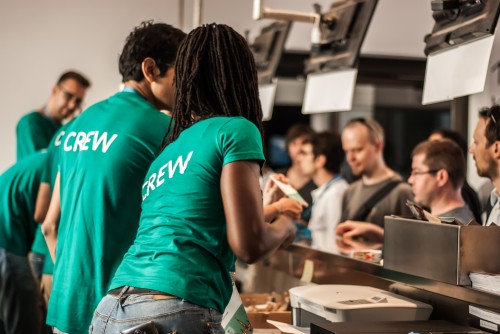
Last year OneReach, a cloud software provider of voice and text solutions, asked 63 customer service experts their opinion on the #1 way to improve customer service. After compiling all of the experts’ opinions, the top two ways to improve customer service were considered to be:
- Focus on employee experience; and
- Walk in the customer’s shoes.
Now, over the last few weeks I’ve been thinking about these results and how leadership and management teams can accomplish both of these things in different and impactful ways.
One way that seems to be very effective is to actually get leadership and management teams to go work alongside employees serving and helping customers. Take Olive Garden, for example, whose new Board of Directors last year took it upon themselves to work in one of their restaurants greeting and serving customers in order to experience life as an employee but also what it is like to be a customer. After working a night in a restaurant, then Chairman of the Board, Jeff Smith, commented that:
“It was an amazing experience because we felt as board members, ‘How are we going to be able to make good decisions in the board room without really knowing what’s happening inside the restaurants?’”
Now, whilst episodic ‘front-line’ experiences are often hugely insightful and, in many ways, transformative, I do find myself wondering why senior leadership teams don’t do this type of thing on a regular basis in order to keep their insight and understanding of the employee and customer experience timely, real and front of mind.
But, should this sort of experience and insight just be limited to leadership teams? Isn’t there an opportunity to go further and involve more people from across organisations to both deepen and broaden the insight and understanding.
Imagine if everyone in a company served customers in store or fielded support calls or answered customer emails or did something like that.
Imagine if companies organised themselves so that all of their staff, including leadership and management, were required to put shifts or slots in their diaries to work in store or answer phone calls or emails or respond to web chat enquiries or comments on social media etc etc.
Obviously, staff would need to receive the right training and tools to be able to do this and the company would have to decide how often it wanted its people to do this in order to manage their day to day workloads. But, imagine the signal it would send to employees and customers if the CEO or CTO or CMO or CFO and everyone else had a ‘shift’ or a two or three hour slot once a month, say, in their diaries where they served customers or fielded customer enquiries.
Imagine the insight and understanding that everyone would get around what it is to be a customer and an employee at all levels of the business and what needed to change to make things better and improve performance.
Imagine, if done well, how many extra support or service hours it could deliver.
Just, imagine.
Now, there will be some executives that will read this and they will think “this wouldn’t be the best use of my time”.
Really?
What better use of your time is there than serving, helping and understanding your customers and employees?
If companies are committed to delivering a better employee and customer experience and, as a result, better competing in the marketplace then they have to be willing to consider doing things differently, including how they operate their businesses.
Getting everyone involved in doing the work of serving and helping customers could offer a very effective way of achieving that.
This post was originally published on my Forbes.com column here.
Thanks to MyStockPhotos for the image.



